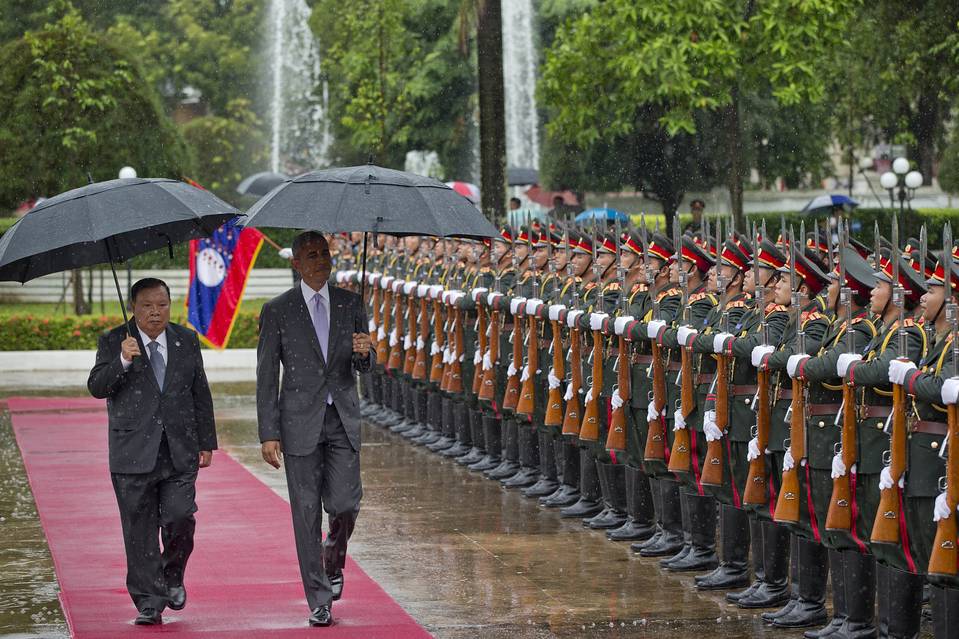U.S. President Barack Obama recognized America’s secret war in Laos from decades ago, a symbolic gesture intended to move the two country’s relations beyond their dark Cold War past.
Mr. Obama, the first sitting U.S. leader to visit the small Southeast Asian nation, stopped short of apologizing for the conflict in his comments Tuesday, but said he came to the country in the “spirit of reconciliation.”
The American leader said the U.S. would give Laos $90 million over three years to help clean up the remnants of two million tons of bombs it dropped on the tiny, landlocked country during the Vietnam War, doubling its current commitment. Decades later, unexploded bombs continue to maim and kill Laotians.
“Today I stand with you in acknowledging the suffering and sacrifices on all sides of that conflict,” Mr. Obama said at the Lao National Cultural Hall on what he said would be his last trip as president to Asia. “Given our history here, I believe that the United States has a moral obligation to help Laos heal.”
The president framed his outreach to Laos as a finishing touch on his so-called rebalance policy in Asia, which is aimed at countering China’s influence by engaging other countries in the region. He also sought to reassure the region that the U.S. wouldn’t ease up on its engagement in Asia under his successor. America’s interests in Asia, he said, “are not a passing fad.”
“And in the United States—across the political spectrum—there is a widespread recognition that the Asia-Pacific will become even more important in the century ahead,” Mr. Obama said. Many world leaders are gathered in Laos for a summit of the Association of Southeast Asian Nations.
His approach to Laos mirrors the one he took when visiting Hiroshima, Japan, earlier this year, the first sitting U.S. president to do so. The White House also has built closer relations with Myanmar as that country emerged from decades of military rule.
Mr. Obama began his visit by meeting with Laotian President Bounnhang Vorachith, where he acknowledged the “challenging history” between the two countries.
At a lunch following their meeting, Messrs. Obama and Bounnhang clinked glasses of red wine as the U.S. president proposed a toast to “the dignity and the future of the people of Laos” and a relationship “to make our two countries whole again.”
During his three-day visit, Mr. Obama also is making the case for a cornerstone of his Asia policy that has stalled in Congress amid opposition from lawmakers in both parties: a new trade pact with Asia.
“The Trans-Pacific Partnership is a core pillar of America’s rebalance to the Asia-Pacific,” Mr. Obama said. “And so failure to move ahead with TPP wouldn’t just have economic consequences, it would call into question America’s leadership in this vital region.”
Mr. Obama was supposed to meet with Philippine President Rodrigo Duterte on Tuesday, but he canceled the meeting after the Philippine leader made disparaging comments. A Philippine government spokesman later said that Mr. Duterte “regrets that his remarks to the press have caused much controversy.”
Mr. Obama said he would meet with survivors of explosions from bombs still scattered throughout Laos, a former French colony. “I know that the remnants of war continue to shatter lives,” he said.
On Wednesday, Mr. Obama flies to Luang Prabang, northern Laos, where he will hold an event with young Southeast Asian entrepreneurs and activists and tour the Wat Xieng Thong Buddhist temple.
Source: Wall Street Journal



